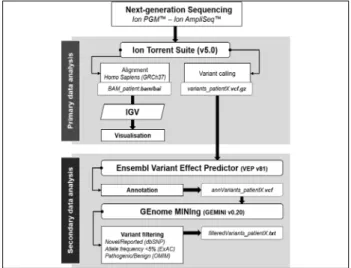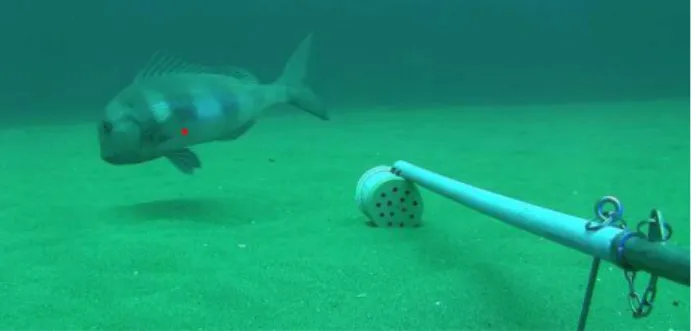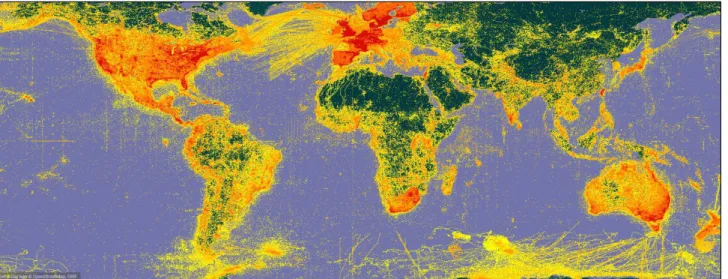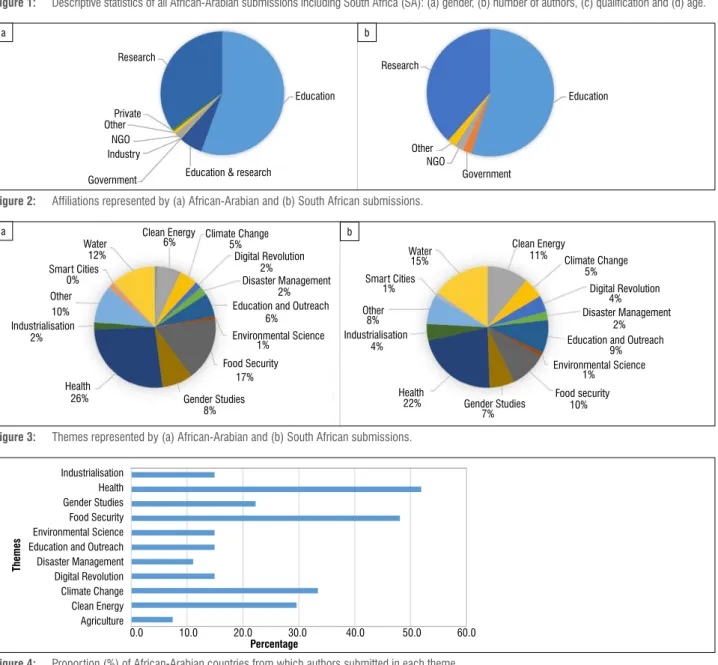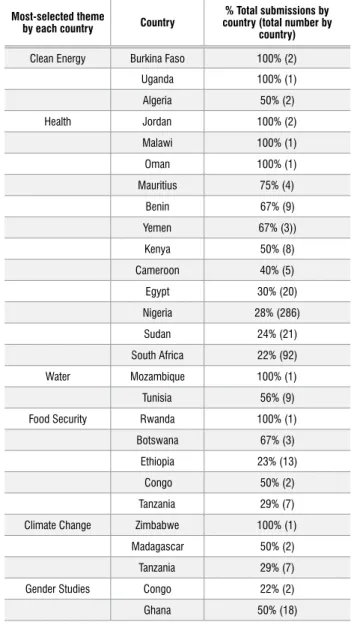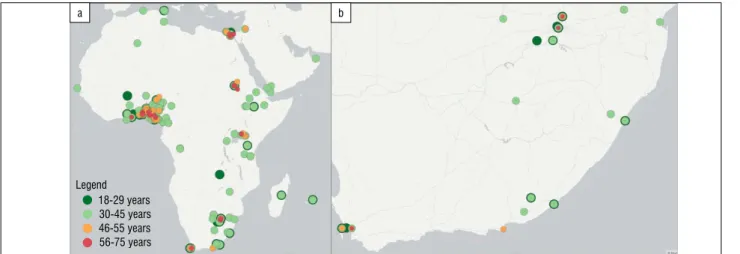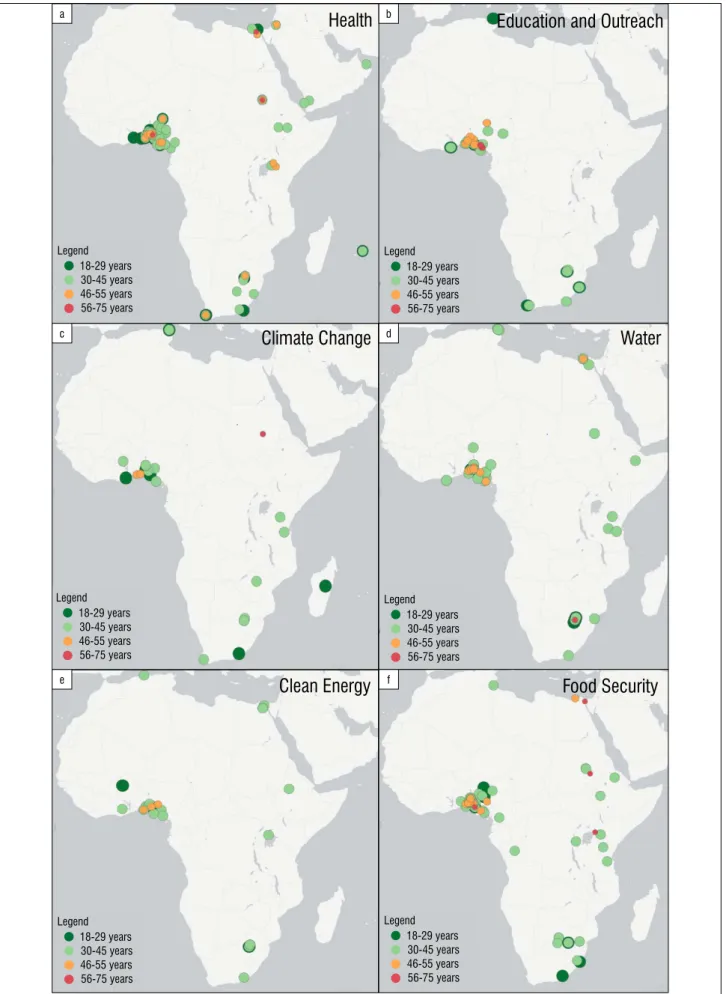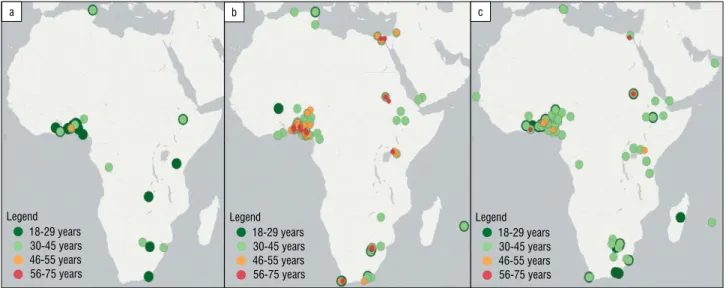A story about the panel debate at the 2nd international conference for women in science without borders. Four papers very helpfully reflect on the vexing issue of the persistent under-representation of women in the natural/basic sciences (with the possible exception of the life sciences).
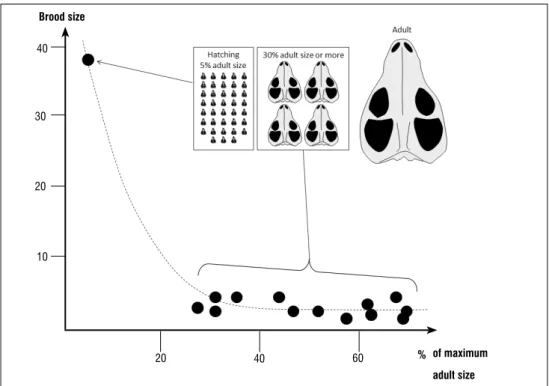
What is next?
The historical narrative usually shows a linear progression, most often marked by years, but the adaptation of multiple timelines is often necessary for a project on global history. This simple fact makes it clear that we must deal with multiple timelines when writing global history.
Acknowledgements
Since world history covers a wider area, we need to combine some elements from the above and provide a detailed picture of the international exchange of knowledge that has not been done before. In South Africa, the main counting system would be two or 2013, as opposed to the European 10-based (i.e. the decimal system) or 60-based (i.e. hours, minutes and seconds of clocks) systems.
We propose to provide an opportunity to develop a specific set of information skills among the new class of data analysts in the biodiversity scientific community. The role of the data administrator can be divided into the fundamental principles of findability, accessibility, interoperability and reuse (FAIR principles). 1.
From where do biodiversity data originate?
Our consideration of capacity development specifically emphasizes the need for conceptual rigor, compliance with technical data standards, and the culture of data publication or data sharing. There is an urgent need for data stewardship skills and positions in the South African biodiversity science community.
The need for conceptual rigour in curating NSC or biodiversity data
We describe previous and current initiatives that can help to provide context and develop skills and capacities for effective management or stewardship of biodiversity research data. Wider adoption of a common conceptual model, protocol and approach to data management will foster the development of a future class of biodiversity informatics technicians and analysts who will be able to manage and conserve in efficiently our biodiversity research data.
Moving beyond traditional uses of NSC collection databases
At a higher level of conceptual abstraction in this model, physical instances and human observations are represented by the same metadata class properties. Therefore, there is a need to develop skills and capabilities for generalized curation or stewardship of biodiversity data, to include data records that represent the full set of concepts used by scientists, or to integrate typical NSC data with typical ecological data (i.e., integrate sample records with observations). for greater rigor or wider spatio-temporal coverage.
Improving biodiversity data curation in South African natural science collections
Specify Software is not only for managing collections of physical specimens
Using the Biodiversity Data Curation Platform could therefore be a first step to remedy this semantic heterogeneity by allowing different users to manage their data independently, but in a way that allows the data to be integrated vertically (Figure 5) through the use of biodiversity information standards (specifically the Darwin Core metadata terms24). Biodiversity data standards are developed and published by the community of biodiversity informaticists and researchers through the organization Biodiversity Information Standards (formerly the Taxonomic Databases Working Group).25.
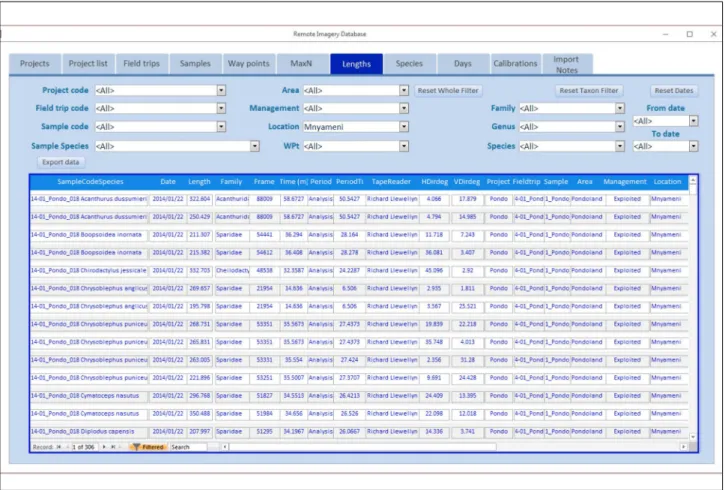
Challenges and capacity development
Here, however, we consider another possibility: that some messages about rhino poaching are counterproductive. Here we look at how some of these lessons can apply to past messages that can help shape future messages about rhino poaching.
Reactance theory – wildlife officials and local communities
Rhino poaching has become a dominant topic in wildlife management in Southern Africa since the poaching onslaught began in 2008.1 As social concern about rhino poaching has increased, various forms of persuasive communication have also been used in efforts to curb, discourage, stigmatize and stop rhinos. to sit poaching as well as discourage end users. How effective are such initiatives, especially in light of the fact that the demand for rhino horn shows little sign of abating and poached carcasses increased to more than 1,000 in South Africa by 2014.
Descriptive norms and injunctive norms – media coverage of a crisis
Mis-readings and counter-readings – NGOs and messages about rhino horn
Loose lips may sink ships’ – official communication and links with the public
A similar problem arises when looking at successes in capturing rhino smugglers or closing a particular smuggling route. The problem of internal cooperation with poachers raises complex questions about how to identify and counter possible internal aid to poachers.
Conclusion
The old conservation paradigm is based on a fortress model, where a largely unfenced protected area is the epicenter of conservation activities.1 The new conservation model is pragmatic, with an emphasis on managing protected areas based on the ecological demands of wildlife and the social environment. economic aspirations of surrounding communities.1,4 Second, the emergence of conflicting spheres of influence now characterizes conservation, where nongovernmental organizations (NGOs) secure their institutional niche by criticizing ZimParks initiatives, reinforced by unscrupulous reporting in the media. Nevertheless, it is imperative to recognize that some NGOs promote conservation and capacity building among Africans, serving as vital channels for transferring skills and technology between Africa and the rest of the world.
The conservation status of the African elephant, a flagship species
Wildlife conservation is at a critical juncture in Africa, hampered by bureaucratic incompetence and erosion of ethical principles, while wildlife populations are threatened primarily by habitat fragmentation and indiscriminate killing.1,2 The Zimbabwe Parks and Wildlife Management Authority (ZimParks) was once foremost in Africa, among the pioneers in the field of wildlife management, including the effective management of protected areas, even allowing the protection of wildlife outside protected areas.1 ZimParks is expected to generate its own income from non-consumptive and consumptive activities such as ecotourism and sport hunting.1 However, a perpetually tight budget, use of outdated equipment, low staff morale, and high staff turnover due to low retention of knowledge and skills limit the department's activities. Outside of protected areas, elephants compete for space with human needs for agricultural land, and there is no chance of restoring prehistoric population levels.4,15,16 An estimated 55 elephants are killed illegally every day across Africa to meet the demand for ivory, which used to make artefacts and ornaments.15 Poaching pressure was strong in East and Central Africa, and the poaching front was slowly moving south, so that Zambia and Zimbabwe began to experience poaching pressure on the iconic Kenyan and Tanzanian elephant populations. has been decimated.15 Elephant population clusters in the Sebungwe Valley and Mid-Zambezi are under siege from poachers, and Chizarira National Park experienced a 75% decline in elephant populations between 2001 and 2014.3 Elephant populations are vulnerable, as evidenced by Kenya and the Selous Game Reserve (Tanzania), which fell sharply from 275,000 to 20,000 from 1973 to 1989 and from 109,000 to 13,000 from 1976 to 2013.8 CITES Monitoring Illegal Killings of Elephants (MIKE) and the elephant trade Programs of information system (ETIS) remain informational but not preventive.9 Outside of protected areas, sport hunting generates revenue for ranchers and communal areas through the Communal Area Management Program for Indigenous Resources (CAMPFIRE).17 CAMPFIRE is a wildlife transfer concept. conservation, where revenues from wildlife products are used primarily for community infrastructure development.17,18 However, illegal trade in wildlife products is still key to maintaining rural livelihoods among communities in the immediate vicinity of protected areas.17,18.
What next? How to mitigate widespread wildlife population declines
I submit that it is not fair because it does not take into account the living conditions of specific researchers, which undermines their equal opportunity to tap scarce research resources controlled by the NRF in its capacity as the only official social institution in South Africa for this purpose. Callaghan1 suggests that the NRF rating system is not sufficiently scientific and that it at least occasionally makes mistakes in rating categories assigned to individual scientists.
Science and non-science demarcation and the NRF rating system
It is often said by NRF administrators that the evaluation process is highly dependent on the detail and content of peer evaluation reports. However, I do not take this sophistication to mean, as Boshoff2 apparently does, that the system is not prone to estimation errors because of the number of checks and balances in the estimation process.
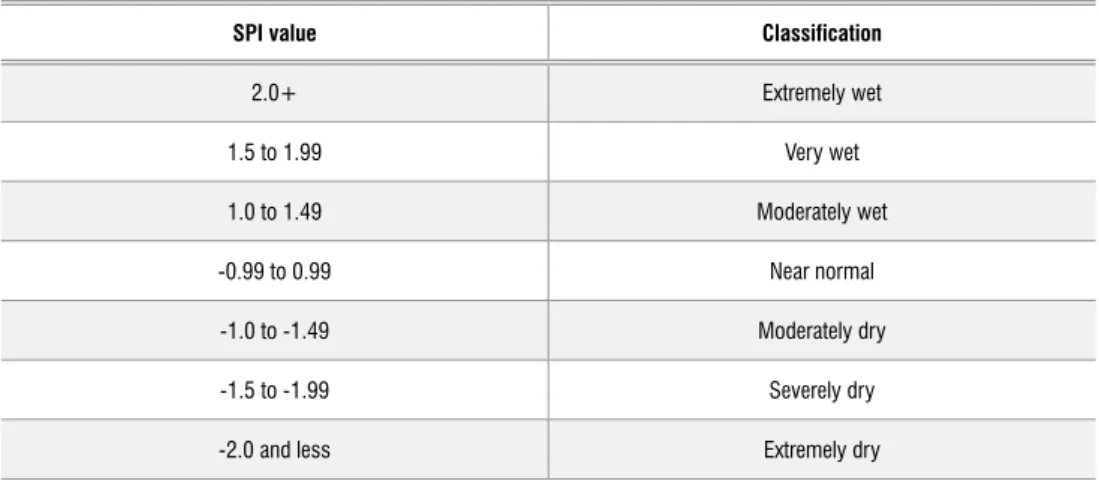
Data
An intended outcome of the conference was to establish a database of metadata from the submissions to identify common goals in the region using Kumu, an open source mapping tool. South African submissions were mostly from metropolitan areas, which is a consequence of the location of the leading tertiary institutions.
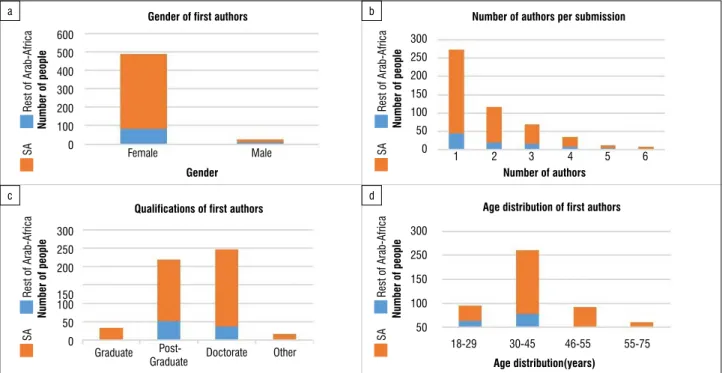
Concluding remarks and recommendations for the way forward
Gender shouldn't matter because we're all scientists here': narrative of a panel discussion at the 2nd Women in Science Without Borders International Conference. We summarize the discussion in relation to each of the three questions, followed by some concluding remarks.
Gender wage gap
However, there is evidence that there is a gap between the incomes of female drivers and their male counterparts. Mentors can help to re-emphasize the intrinsic value of the research being conducted and the actual contribution it is making to the field.
Cultural perceptions and encouraging young girls to become scientists
The support women need can often be found by working with other women in the same field. The balance in gatekeeper positions will change when women are better represented at the top levels of science and are seen and recognized as experts in their fields.
The need for women in the sciences
It was suggested that this may have become associated with performance appraisal in recent years and be related to the claim that women are consistently undervalued by both women and men.12 One of the best ways to combat this phenomenon is to know that others women experience it. Marginalizing women's needs and expectations when constructing a research strategy excludes half of the population's demands and aspirations.
Audience responses
Women make up half of the population and continued financial investment and skills policy reforms are recommended to remove the societal – and institutionalized – discrimination that prevents women from achieving positive higher education outcomes in STEMMI, and subsequently in their participation and growth in the labor force.13 The marginalization of women amounts to excluding half of the population's needs and forfeiting the value that could have been added to them. The presence of women in the sciences and decision-making positions can provide valuable input and improve overall efficiency.
Acknowledgement
In this commentary, we describe one of three collaborative projects – the Gender Gap project – funded by the International Science Council (ISC) and the 11 partners in the project. This project is the only one of the three that addresses an issue of such great relevance to society.
Background
A global approach to the gender gap in mathematics, computing and science: How to measure it, how to reduce it. The aims of the project are to provide evidence on which interventions can be based and to make test-proven best practice material available.
The Gender Gap project
The project includes a joint global survey and a bibliometric analysis, both of which have an emphasis on comparing and contrasting results from less developed countries and from more developed countries.
Global Survey of Mathematical, Computing and Natural Scientists
The starting point of this project is that men are involved, both in the surveys and in the organization and implementation of the project. As a result, the language of the survey is relevant for industry participants, as well as for academics and other professionals.
Joint data-backed study on publishing patterns
The workshops' objectives were to inform diverse regional scientific communities about the project, present its three tasks, connect with people instrumental to the success of the project, and get input from Asia, Latin America and Africa to ensure that the project reflects local realities. Once completed, results from each of the workshops were organized and compared to determine the final survey instrument.
Database of good practices
Name origins can be estimated and confidence limits can be provided for African, Asian and European names and names derived from them, using additional APIs, which are also evaluated for this purpose.
Conclusions
Empirical knowledge of the career challenges faced by African scientists, especially female scientists, is an important key to future success in the continent's scientific systems. However, the findings highlight the importance of the challenge that reconciling work and family life poses to the majority of African women scientists.
Introduction
In this article, we address the lack of evidence generally on the careers of scientists in Africa by providing the first continent-wide description of the challenges they face and how these challenges differ between women and men. Contrary to expectations, we found that African women scientists do not report experiencing career challenges to a greater extent than men, and they have been more successful in raising research funds in three of the six major scientific fields.
Results
It is therefore logical that younger female scientists are somewhat more likely than their older counterparts to perceive a lack of training and mobility opportunities as career challenges. When looking at region of nationality, the most striking pattern is that North African female scientists were more likely to report the negative effects of 6 out of 10 challenges on their careers: a lack of (1) guidance and support, (2) mobility opportunities, (3) training opportunities, (4) research funding, and (5) research equipment funding; and (6) a limitation in terms of academic freedom.
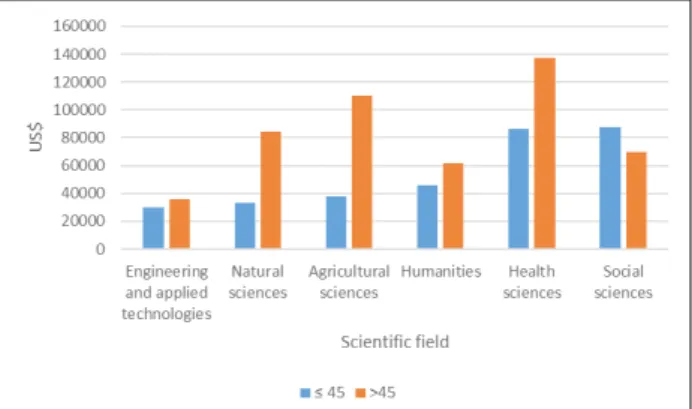
Authors’ contributions
We thank our funders – the IDRC (Canada), the Robert Bosch Stiftung and the DST-NRF Center of Excellence in Scientometrics and Science, Technology and Innovation Policy (SciSTIP) – for their support. The mean CF values for the fish in each group are shown in Table 1. The mean daily specific growth rate (SGR) of the fish was calculated as a percentage using mass measurements from day 1 to day 30 and from day 30 to day 60 post - hatch.
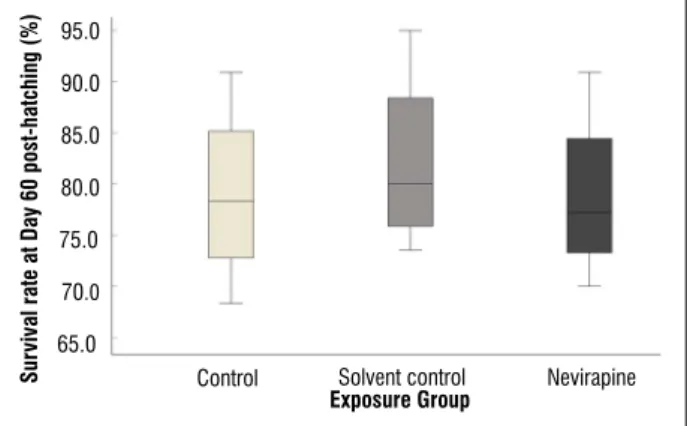
Discussion
Importantly, none of the ER+/PR+ tumors determined on IHC were reported as basal subtype breast cancer. More importantly, three (4%) of the ER+/PR+ tumors as determined by IHC/FISH were ER-/PR- on TP regardless of whether they were Luminal type.
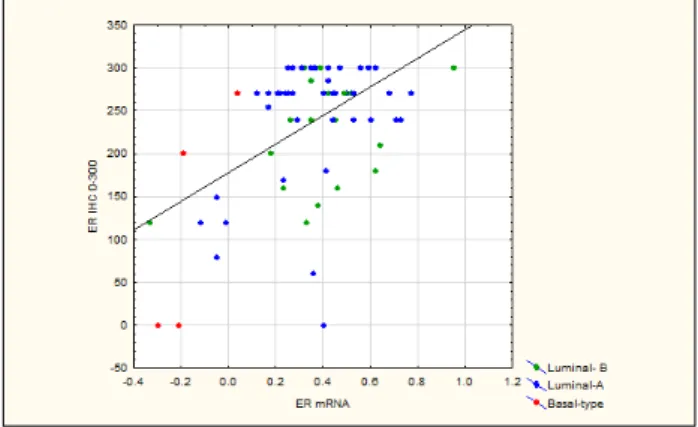
Competing interests
Microarray-based determination of estrogen receptor, progesterone receptor, and HER2 receptor status in breast cancer. Impact of MammaPrint on clinical decision-making in South African patients with early-stage breast cancer.
The refugee hypothesis
Here we review available evidence relevant to the refugia concept for the Knysna elephant population. The refugee concept suggests that the extent of the Knysna elephant population has decreased from those living in historically open areas to being restricted to the forest and its immediate surrounding fynbos habitat.
The illegal killing hypothesis
The stochastic founder hypothesis
Therefore, it can be speculated that if there were sexually mature bulls and cows between the 1920s and the late 1900s, and the cows were mostly divided into small groups consisting of an adult cow and her calf, the lack of allomothering could has played an important role in reducing calf survival. It is very likely that demographic stochasticity played a role in the inability of the small founding population of Knysna elephants to recover once protection was provided.
Synthesis
In addition, some locals were of the opinion that the Forestry Department, which is responsible for the elephants. The comparative records of group structures of the AENP and Knysna elephant founder populations reflect potential stochastic effects.
Management implications
A study of the distribution, population composition, movements and diet of Knysna elephants Loxodonta africana africana (Blumebach 1797). Ecology of large native herbivores in the coastal lowland Fynbos Biomes in the Western Cape, South Africa [PhD thesis].
Materials and methods
Most of these publications were published in the second half (from 2004 onwards) of the program's operation. Additional variables represent the funding organizations that administer Water Work funding: the Center for Invasion Biology (C•I•B), the Agricultural Research Council (ARC), and the Water Research Commission (WRC).

Mass media and public health informatics
Syndromic disease surveillance mechanisms can be improved by incorporating mass media informatics for disease discourse and deviance detection and social psychology to understand risk perceptions and drivers of uptake and resistance. The lack of clinical knowledge at the onset of the crisis contributed to anxiety among scientists and the public.
Case study: The Zika virus disease
Google has been used to monitor Ebola-related web search behavior and dengue outbreaks.20-22 Some authors have used a travel health website23 to monitor Zika virus fears, others have examined the framing of the Zika crisis24 in two Brazilian newspapers (O Globo and Folha de Sao Paulo) and the coverage of mosquito-borne diseases in Italian newspapers25 and compared Zika to other diseases. Newspaper coverage and Google Trends for the Zika virus in Brazilian, British and US media were examined with the aim of contributing to a growing body of knowledge about the use of non-clinical sources for passive monitoring.
A mild virus of African origin turns invasive
Computer-aided keyword analysis was used to detect diseases and aberrations and to analyze trends indicating waves of public concern. The knowledge crisis among scientists, the perception crisis among the public and the psychosocial and economic obstacles to containment were also discussed.
Research objectives
Data and research methods
Data for this study were obtained from O Estado de São Paulo (O Estado) and O Globo, two major Brazilian newspapers; The Times of London and The Telegraph were published in the UK and USA Today and the New York Times were based in the US. UK and US newspapers also provide indicators of when the media discovered events to report and attention to two important events in Brazil (the Rio Carnival and the Olympics) that may have affected foreign visitors from these countries.
Limitations of research
In total, 246 articles from The Times of London and 414 from the New York Times were used for the trend analysis. The same dates were used for 'Zika' on Google worldwide, Google UK and Google USA.
Findings
Despite an expert's warning that the Olympics could become the "Olympic Games of brain damage," the International Olympic Committee rejected calls for a postponement. One told a newspaper that the Games were more important than "the bugs": "It's the Olympics, it's the Olympics.
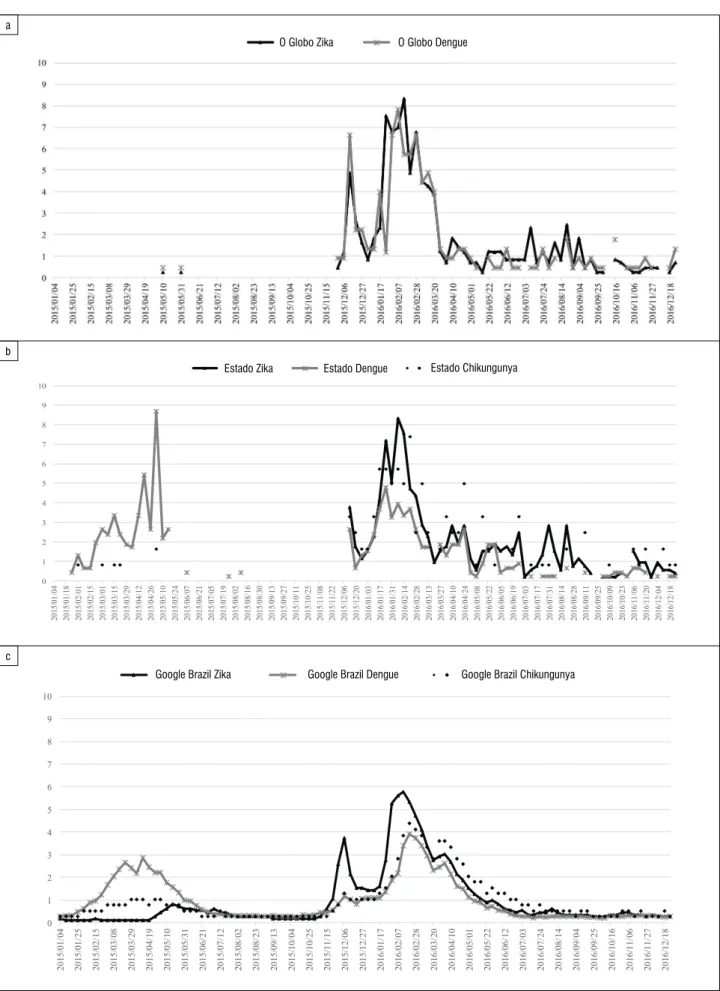
Semi-supervised techniques
Next, we propose a semi-supervised density-based technique using Wong's density clustering algorithm.18 We call this the SSSWong technique (semi-supervised segmentation applied to Wong's density clustering methodology). The SSSKMIV variant has some similarities with the k-means semi-supervised segmentation algorithm proposed in Peralta et al.19, which is called LK-Means.
How to measure model performance: Data splitting and Gini coefficient
Details of the technical specifications (eg optimal number of segments, weight parameters in SSS, optimal value of k in the k-means algorithm, and a heuristic example) can be found in Breed11. To facilitate the mathematical representation of the objective function of the LK-Means algorithm, we extend the notation Scj to Scjl, to refer to all observations for a given task c∈C, for a given segment index j and a label of certain l.
Description of data sets
CNS technique, but an existing technique adapted to be comparable to others presented in this paper. The deformation weight, w, is similar to the weight in SSSKMIV and again adjusts the supervised element with values between 0 and 1.
Empirical results
And finally, Table 8 provides a summary of the median and mean ranks for all five semi-supervised segmentation techniques. Three of the four variations (SSSKMCSQ, SSSKMIVSSE, LK-Means) achieved a median rank of 3, while LK-Means achieved a mean rank of 2.67 (only slightly higher than SSSKMCSQ and SSSKMIVSSE).
Concluding remarks
The above analysis illustrates the problem of using Gini as an absolute value.27 The best was 87.33% for LK-Means on the chess data set, but for the insurance data the best SSSKMIVSSE with Gini was 15.24%. Such results are not a reflection of the techniques used, but of the data treated.33 It is unreasonable to have a widely used minimum Gini.34 Using Gini coefficients for comparison only makes sense if the data are comparable—in this case, different models applied to the same data.
Bioinformatics pipeline
The script vep_single.sh (Supplementary Appendix 1) takes an input .vcf.gz file generated by Torrent Ion as its first argument and runs VEP on it. The vep_batch.sh and gemini_batch.sh scripts (Supplementary Appendices 4 and 5, respectively) each execute their counterpart script,.
